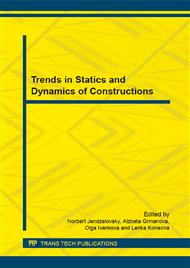p.3
p.9
p.13
p.19
p.25
p.29
p.36
p.43
p.49
Historical Timber Structures with Selected Joints
Abstract:
Repairs of historical timber structures lead to connecting existing and new beams. The requirements for beam authenticity make use of older ways of connecting. The first type is the splice of beams in bending with the scarf joint, rafters and tie-beams are joined with the dovetail and, finally, the connection of the main joist with the strut is by the mortise carve.
Info:
Periodical:
Pages:
25-28
Citation:
Online since:
June 2015
Authors:
Keywords:
Price:
Сopyright:
© 2015 Trans Tech Publications Ltd. All Rights Reserved
Share:
Citation:


